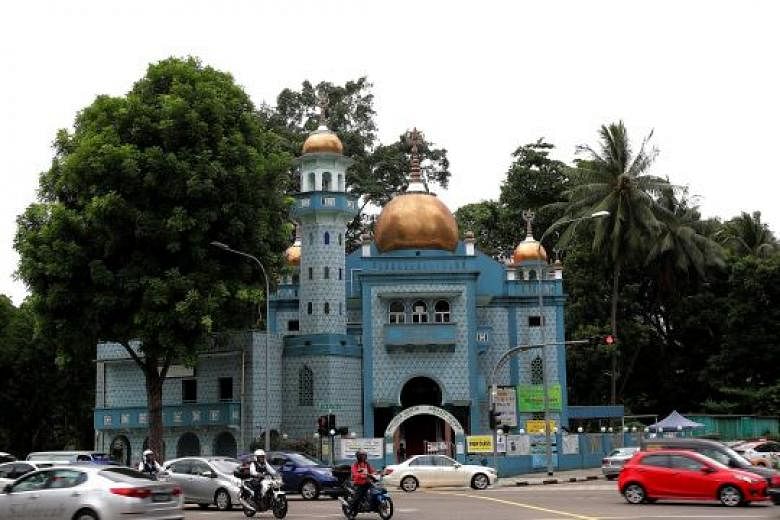A proposed new annexe for a mosque in Victoria Street might result in the exhumation of around 10 to 15 unidentified graves from Singapore's oldest Muslim graveyard - Jalan Kubor - that houses remains of luminaries from early Singapore.
The mosque, the Masjid Malabar, falls under the second phase of the Islamic Religious Council of Singapore's (Muis) Mosque Upgrading Programme. The proposed L-shape extension of the land eats into part of the historic graveyard's space. The graveyard has 4,752 graves.
But the extension will not affect the graves and mausoleum of the late local Justice of Peace Haji Ambok Sooloh Haji Omar and his parents, and the often-visited grave of Kunji Koya Tangal, The Straits Times understands. Another 15 unidentified graves in the affected area will also be safeguarded in some form.
ST understands that the plan is for the mosque to buy over the land and build a three-storey annexe there for a female prayer space, a heritage gallery and classrooms.
It is part of the mosque's efforts to "accommodate its ever increasing" congregation as well as to retain the culture of Malabar Muslims who migrated here from Kerala, India, said its chairman Haji Osman Abdullah.
The Malabar Muslims settled in Singapore from the early 19th century. They opened the mosque in 1963. It falls under the Kampong Glam conservation gazette.
A spokesman for the mosque said it is working with Muis and is in consultation with other relevant agencies along with community stakeholders on this upgrading project.
-
4,752
-
Number of graves in Jalan Kubor, Singapore's oldest Muslim graveyard.
The cemetery, which has been zoned for residential use since 1998 under the Master Plan, holds the secrets of a cosmopolitan Singapore in the 19th century, with tombstones bearing influences from nearby Java and Gujarat, India as well.
The overseas influence is tied to Kampong Glam's past as a thriving port area which stretched from Beach Road to Kallang River and Rochor River, according to the research of Dr Imran Tajudeen, an assistant professor at the National University of Singapore's (NUS) architecture department.
Haji Osman said: "We are open to a solution that will retain the site's history but there's also an urgent need for space for the community today."
During special occasions, more than 1,000 worshippers visit the mosque, and mats have to be laid outside its compound.
In 2014, the National Heritage Board commissioned a study of Jalan Kubor led by Dr Imran.
Dr Mohamed Effendy from NUS' department of South-east Asian studies, who also participated in the study, said he was alarmed the graves could be affected and that Jalan Kubor should not be touched.
The cemetery comprises three main sections - the burial grounds for Malay royalty; a plot initially intended for Indian Muslims which became a favoured plot for wealthy Bugis and Banjar merchants; and an area for Muslim burials managed by the Aljunied family.
Dr Imran said Jalan Kubor should be included within the conservation district. He said: "Preserving the cemetery intact does not preclude developing its immediate surroundings or the expansion of adjacent buildings, as the actual cemetery grounds are surrounded by vacant plots formerly occupied by shophouses and warehouses that can be built upon. With judicious care, the mosque can expand without affecting any graves at all."


